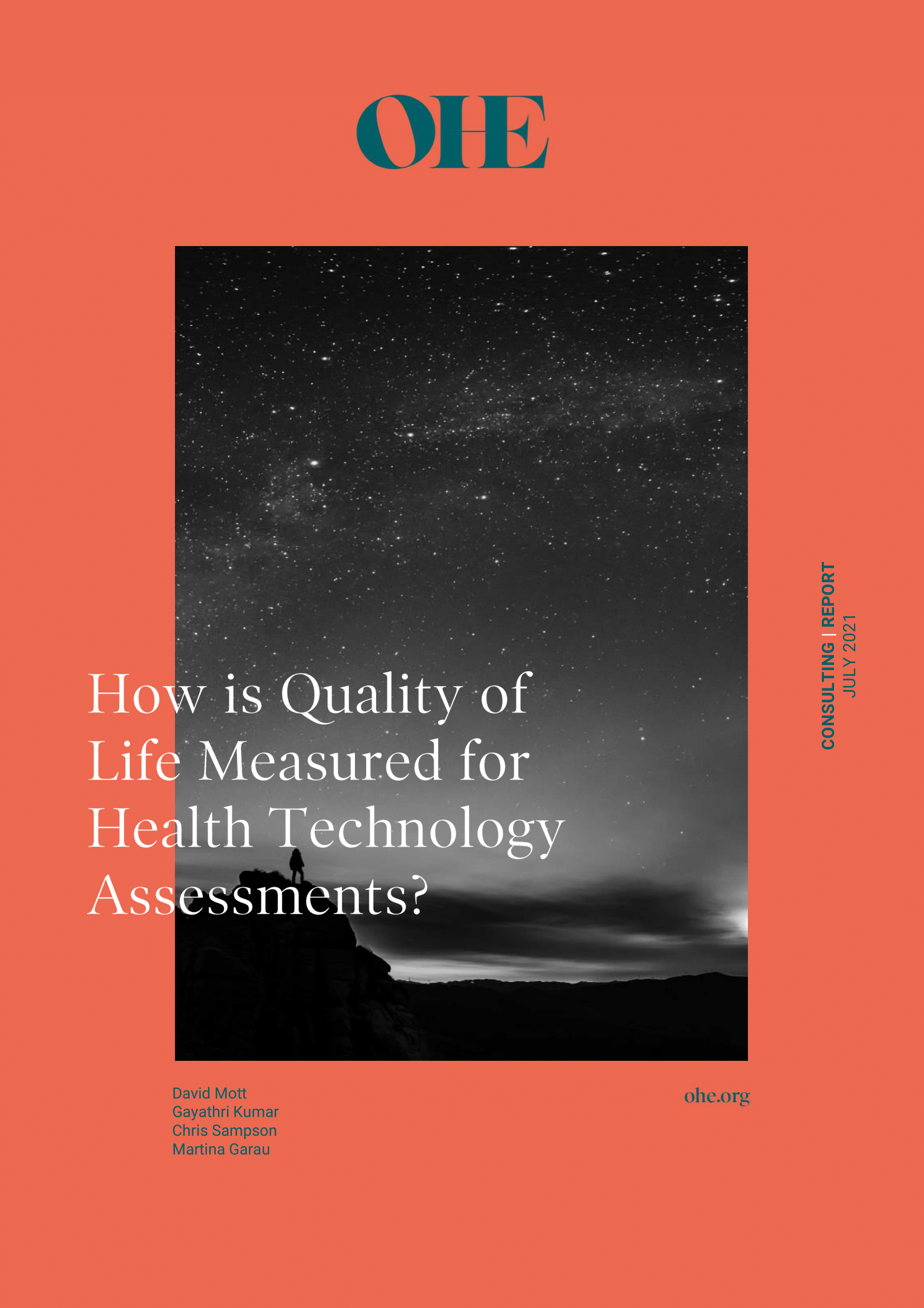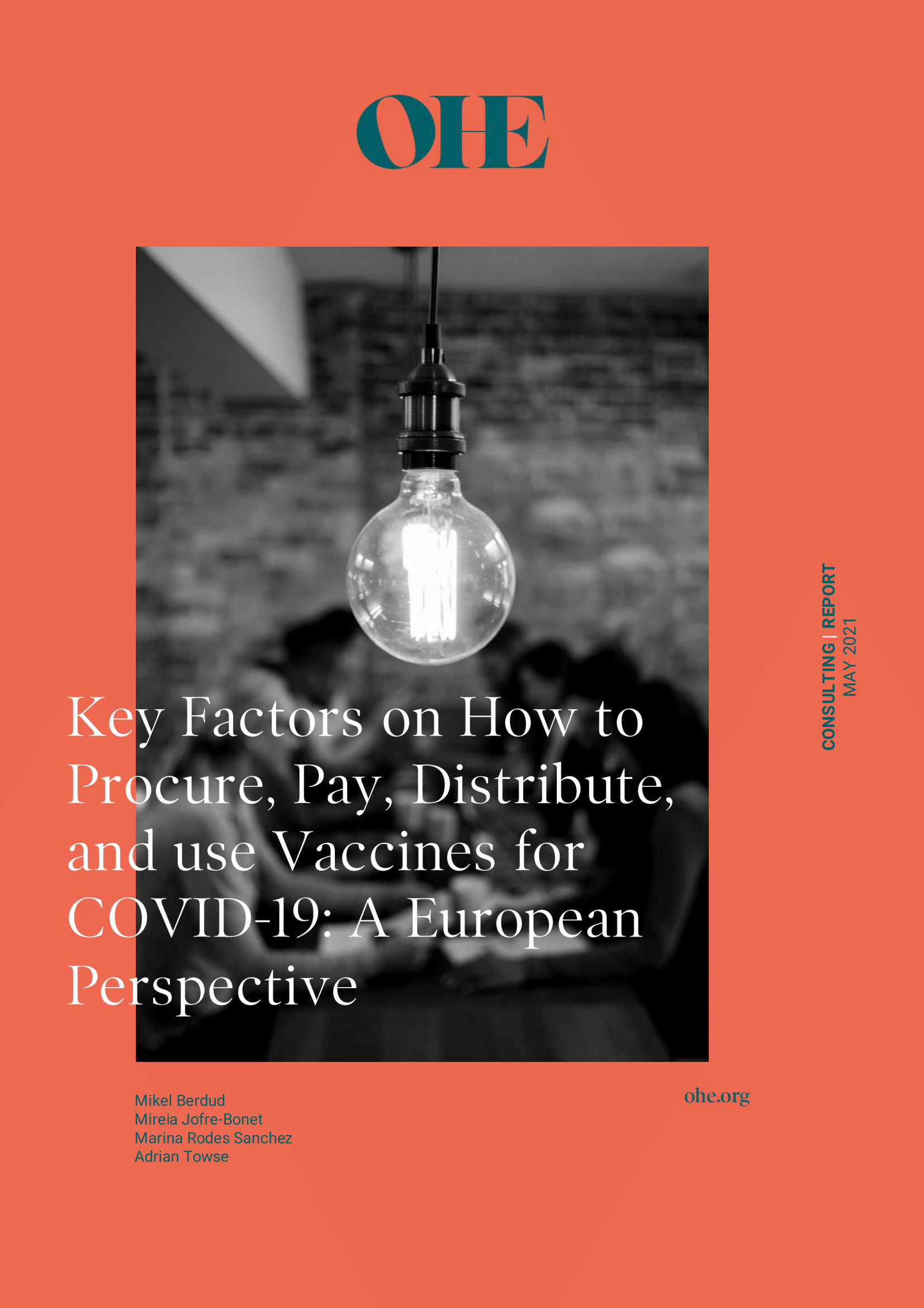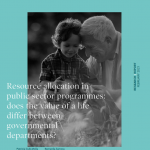Sign up to our newsletter Subscribe
How is Quality of Life Measured for Health Technology Assessments?

Sign up to our newsletter Subscribe



New OHE Research Paper: What is the normative basis for selecting the measure of ‘average’ preferences for use in social choices?
Value sets for preference-based patient-reported outcome measures aim to provide, for each health state defined by the measure, a single utility value that reflects the average preferences of the general public. But what precisely do ‘average preferences’ mean in this context? There are a number of ways of combining numbers representing the utilities of individuals to achieve an average reflection of society’s preferences.
EQ-5D valuation research typically relies on means, although the median has also been used. These reflect quite different things: the average of peoples’ values, as opposed to the value of the average person. Still other approaches are possible, including the geometric mean, mode, or indeed any of the above taken together with various rules about the exclusion of outliers (in effect, a judgement about whose votes should count).
Which approach to aggregation of individual preferences is chosen can have an important effect on conclusions about what ‘society’s’ preferences are – with implications for decision making and the allocation of public funds. Which approach to calculating the average should be used is a normative question: it cannot be answered with recourse to empirical evidence alone. The choice of summary statistics is not merely a technical matter, but invokes ethical issues that need to be resolved.
These issues are explored in a new OHE Research Paper entitled: What is the Normative Basis for Selecting the Measure of ‘Average’ Preferences for Use in Social Choices? The paper is authored by Professor Nancy Devlin and Koonal Shah of OHE, in collaboration with Ken Buckingham. The aim of the paper is to consider what normative arguments might exist for advocating the use of any given measure of the average in the context of health state values.
The paper begins by providing examples of the importance and implications of the choice of measure of central tendency in stated preference studies. Then, drawing on the theory of social choice, voting models and welfare economics, the authors consider the criteria that are available for judging the ‘goodness’ of alternative approaches to aggregation, and evaluate their relevance to the selection of the measure of average EQ-5D values.
This paper builds on research that was funded by a Department of Health Policy Research Programme grant (NIHR PRP 070/0073).
Access the OHE Research Paper here.
For more information about OHE’s research on this topic, contact Nancy Devlin.
An error has occurred, please try again later.
This website uses cookies so that we can provide you with the best user experience possible. Cookie information is stored in your browser and performs functions such as recognising you when you return to our website and helping our team to understand which sections of the website you find most interesting and useful.
Strictly Necessary Cookie should be enabled at all times so that we can save your preferences for cookie settings.
If you disable this cookie, we will not be able to save your preferences. This means that every time you visit this website you will need to enable or disable cookies again.
This website uses Google Analytics to collect anonymous information such as the number of visitors to the site, and the most popular pages.
Keeping this cookie enabled helps us to improve our website.
Please enable Strictly Necessary Cookies first so that we can save your preferences!